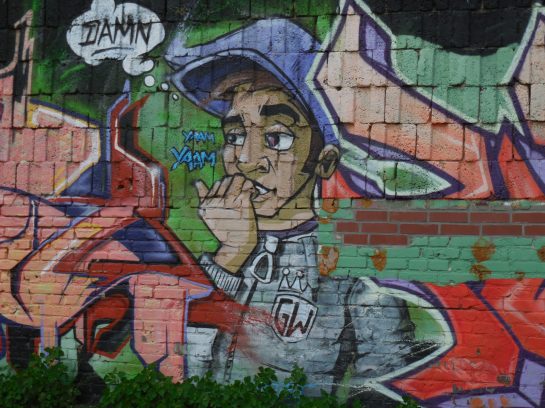
I first visited this permanent exhibition of politically motivated murals on the longest stretch of the Berlin Wall, reaching 1.3 kilometers or just under a mile, back in 1991, when there were six more murals. The East Side Gallery was created in 1990, shortly after the fall of the Berlin Wall on November 9, 1989. Artists from more than 20 countries took part.

I was fascinated by the bold, brightly colored visual statements displayed in the open-air gallery back then, although I had not truly understood them before my second visit in 2019. Having lived in the Czech Republic and Czechoslovakia for more than 20 years, I have heard from friends what it was like to live under a totalitarian regime. I have friends who greatly suffered under the Communist regime. The messages of newly found freedom and the zest with which the fall of the Berlin Wall was depicted in those more than 100 murals took on another dimension for me in 2019. I could better appreciate the sheer euphoria and utter joy triggered by that historic event in 1989.

When the wall was renovated in 2009, six artists refused to recreate their work, so I was able to see more in 1991. Also, the East Side Gallery had been longer back then. In 2006 45 meters of the wall was destroyed for commercial purposes. Then, in 2013, six more meters were taken down.
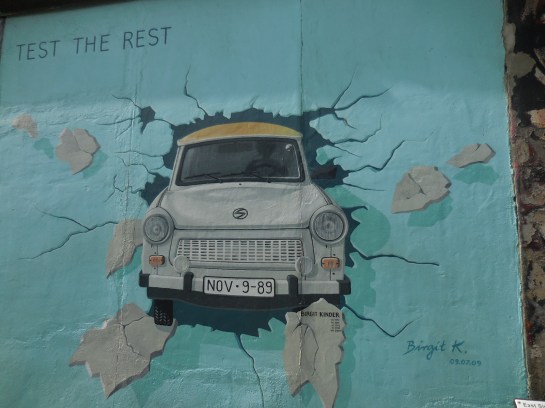
Many of the murals made a great impression on me. Of course, the mural of Soviet and GDR leaders Leonid Brezhnev and Erich Honecker kissing was poignantly repulsive. For me, it certainly epitomized the political climate under Communism.

The Trabant (a GDR-made car that came to symbolize the Communist country) almost leaping through the wall had an amazing three-dimensional quality. The mural challenged me to appreciate better the euphoria of the East Germans as the Wall came down and their thirst for freedom. I noticed that the license plate of the car was the date that the Berlin Wall fell – November 9, 1989.
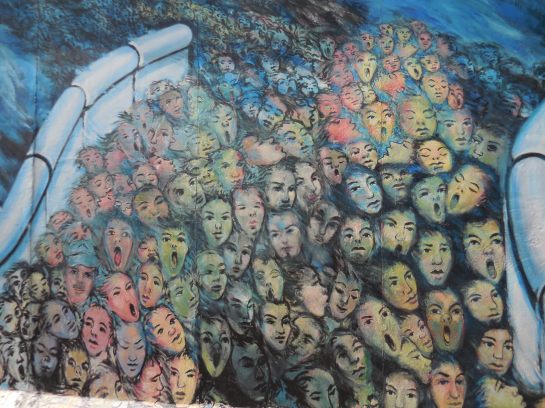
I also enjoyed studying the faces in the crowd trying to scramble through the hole in the Wall on November 9, 1989. Not all expressions emitted joy. In those faces I read apprehension and fear as well. A new world had suddenly opened up, and there would be challenges to form a stable democracy, to make the country blossom economically and culturally. The transformation would not happen overnight. There would be trials and tribulations before the change was complete.

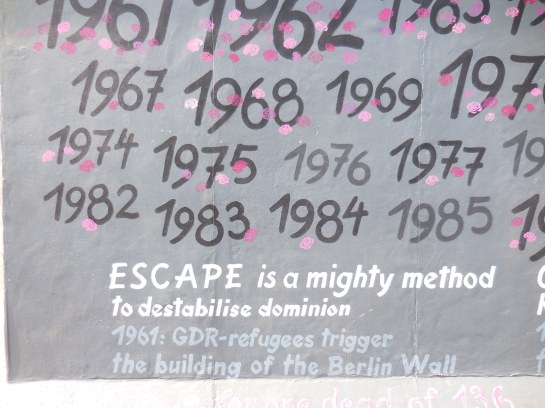
One mural that stood out for me was dominated by the word Berlin in white letters on black. In the left-hand corner were some tall buildings with the words New York. Balloons hovered above the name of the German city. For me this painting celebrated Berlin’s identity. It showed pride in the city of Berlin and the sense of hope that immersed the city after the unification. As one city, without the East and West divisions, Berlin would flourish, it seemed to say. (I am sorry I do not have a picture of this mural.)
Another that caught my attention read Curriculum Vitae at the top and listed many years from 1961 to 1989. Below the numbers I saw the words, “Gratitude to the killed and surviving refugees.” It made me think of the people that had escaped to West Berlin and then had helped others escape, risking their lives so that others could enjoy the freedom they had found.
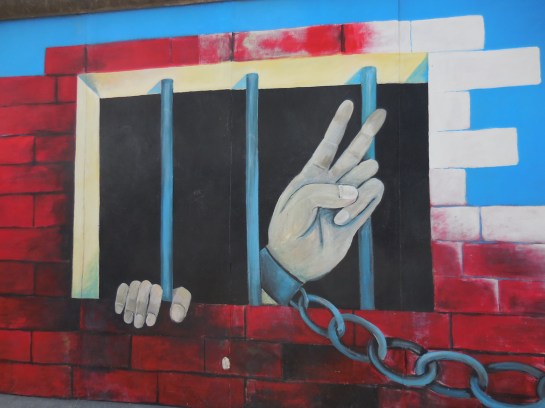

Other murals included joyful people dismantling a wall. White doves fluttered on a blue background in one visual statement celebrating peace. Another mural showed a hand making the peace sign through bars and chained to a white dove, the sun behind the bird that symbolized peace. Some consisted of grotesque or cartoon-like figures. Cartoonish gas masks, all connected to each other, dominated one picture. A few of the paintings seemed set in a sci-fi world. In one mural an American flag and red star appear in the foreground while the Brandenburg Gate is pictured in the background.
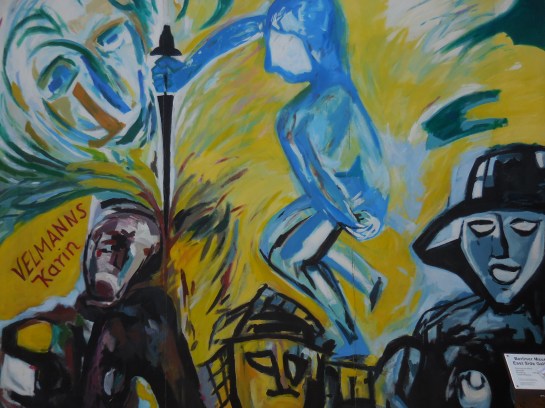

I felt exposed at the gallery because I sensed that I was in the middle of nowhere, though I was near a train and subway station as well as a modern arena, a hotel and high-rise housing. I felt as though I was in the East Berlin I had visited in 1990 – a desolate, dreary place as opposed to what had been the lively western part. After seeing the murals, I fled back to Charlottenburg, a quarter in which I felt very comfortable because it was inhabited mostly by locals, there was an absence of tourist shops, and the streets were tranquil. At the East Side Gallery, I did not feel comfortable. Frazzled, I was even relieved when I had finished touring the sight.
Tracy A. Burns is a writer, proofreader and editor in Prague.
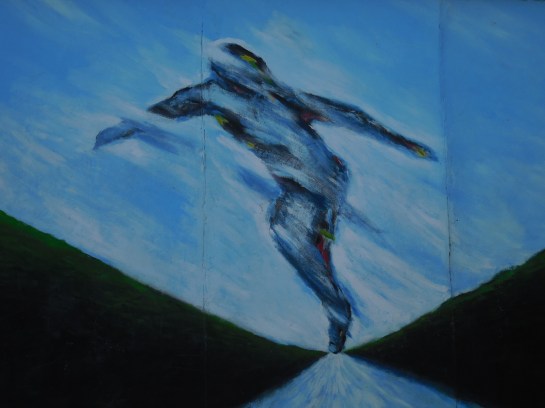



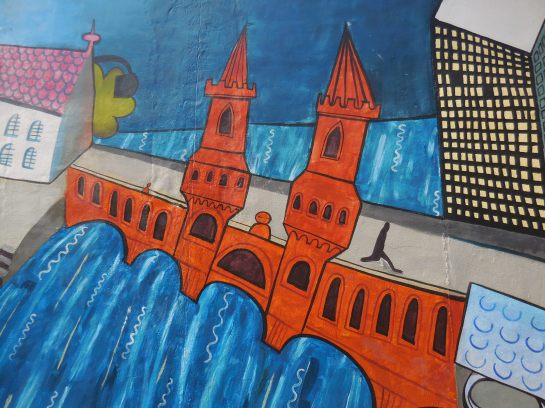




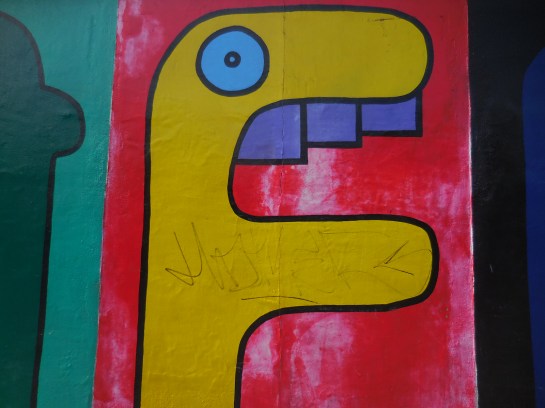
On the other side of the Wall, there was some interesting graffiti and more murals.




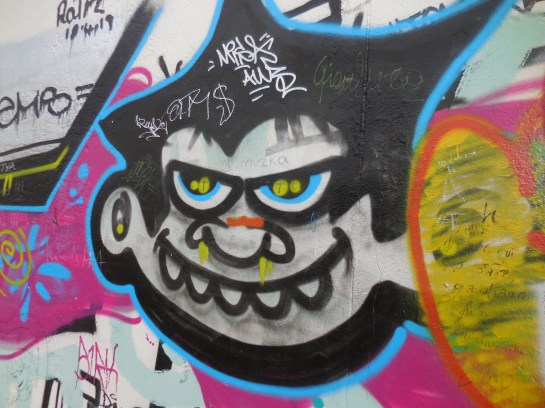
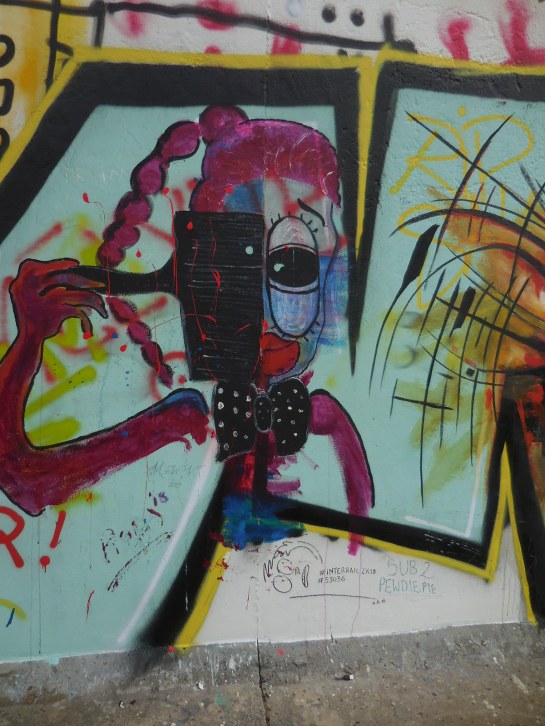
The other side of the Wall with the graffiti

